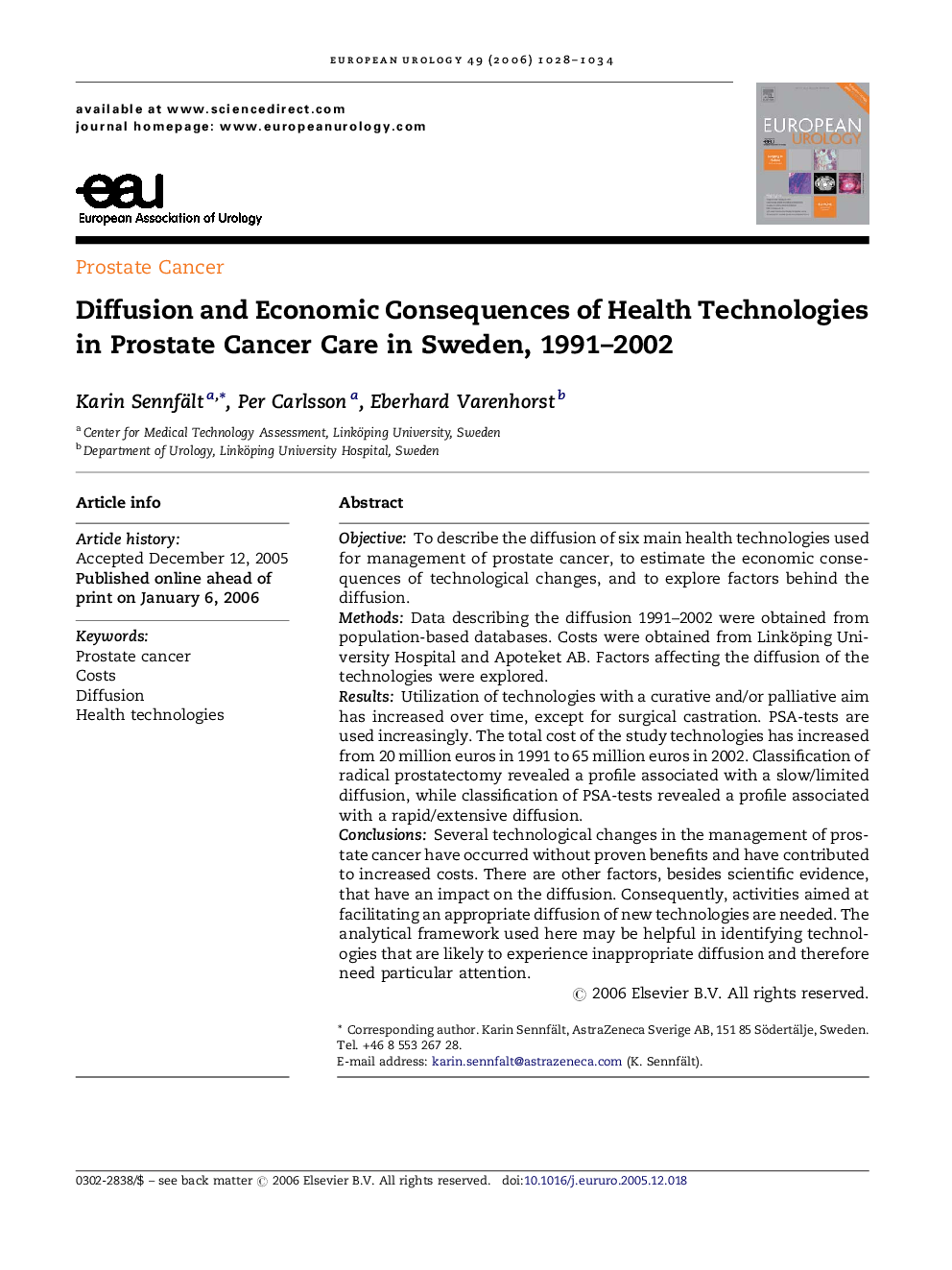| Article ID | Journal | Published Year | Pages | File Type |
|---|---|---|---|---|
| 3926924 | European Urology | 2006 | 7 Pages |
ObjectiveTo describe the diffusion of six main health technologies used for management of prostate cancer, to estimate the economic consequences of technological changes, and to explore factors behind the diffusion.MethodsData describing the diffusion 1991–2002 were obtained from population-based databases. Costs were obtained from Linköping University Hospital and Apoteket AB. Factors affecting the diffusion of the technologies were explored.ResultsUtilization of technologies with a curative and/or palliative aim has increased over time, except for surgical castration. PSA-tests are used increasingly. The total cost of the study technologies has increased from 20 million euros in 1991 to 65 million euros in 2002. Classification of radical prostatectomy revealed a profile associated with a slow/limited diffusion, while classification of PSA-tests revealed a profile associated with a rapid/extensive diffusion.ConclusionsSeveral technological changes in the management of prostate cancer have occurred without proven benefits and have contributed to increased costs. There are other factors, besides scientific evidence, that have an impact on the diffusion. Consequently, activities aimed at facilitating an appropriate diffusion of new technologies are needed. The analytical framework used here may be helpful in identifying technologies that are likely to experience inappropriate diffusion and therefore need particular attention.
